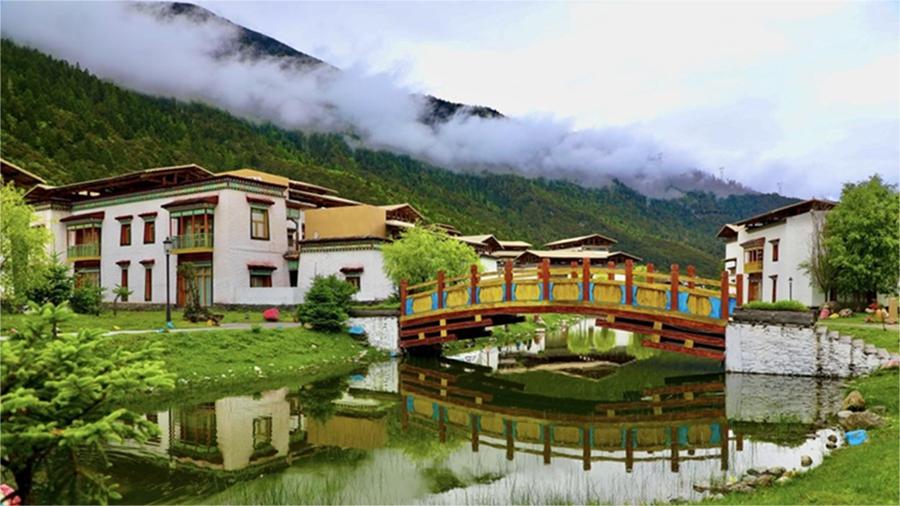Mariculture thrives in Fuzhou, SE China's Fujian
"The weather is so hot, I wonder how the 'babies' are doing.”
Wang Rongbiao, a resident of Tongxin village in Ankai town, Lianjiang county, Fuzhou city, southeast China's Fujian Province, stood over his fish farm, arms folded and sweating from the heat.
The "babies" Wang was thinking about were in fact his abalone seedlings, which are being cultivated in a water area in east China's Shandong Province.
Two months ago, Wang sent the abalone seedlings to Shandong to escape the heat. He will bring them back in November.
The south-north abalone cooperative breeding model that Wang adopts ensures faster growth, higher survival rates, and superior quality for abalones.
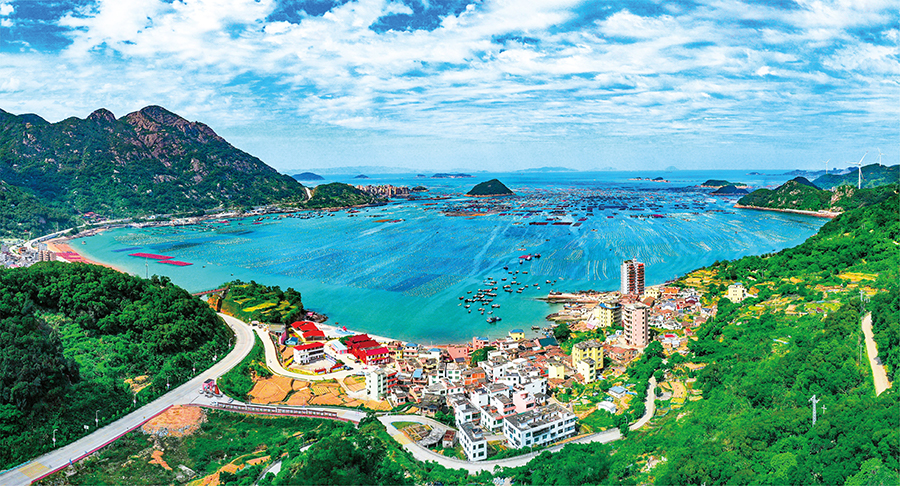
Photo shows a mariculture zone in Tongxin village, Ankai town, Lianjiang county, Fuzhou city, southeast China's Fujian Province. (Photo/Lin Shuangwei)
In Guanwu village of Lianjiang county, the local people rely on the sea for their livelihood. In the past, cultivating kelp was their sole aquaculture project.
However, in the winter of 1994, an unusually warm season caused all the kelp seedlings planted in the village to rot away.
After careful consideration, Lin Zhelong, Party chief of the village, made a bold decision to borrow money and charter a plane to bring back kelp seedlings from Shandong.
"The following year, the kelp yield and prices doubled, and the villagers made a significant profit,” recalled Lin.
In 1996, Lin established a marine development company that specializes in kelp seedling cultivation.
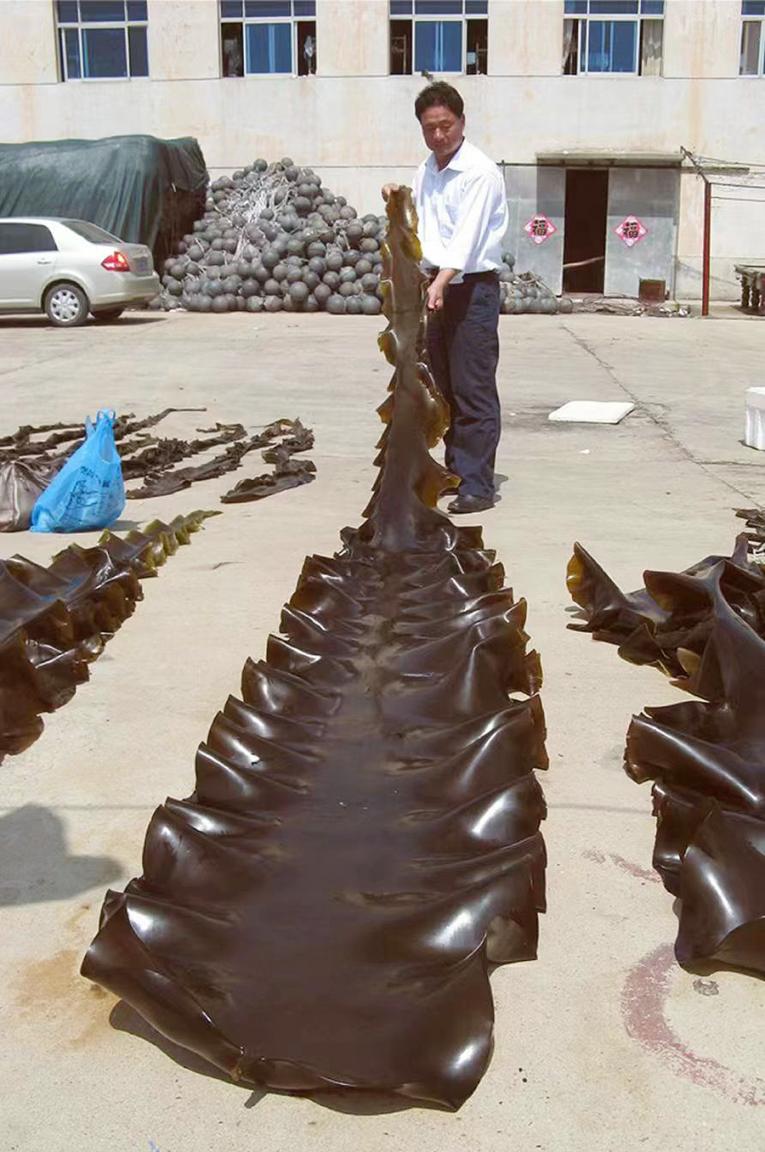
Lin Zhelong checks newly harvested kelps. (Photo courtesy of the interviewee)
"We offer high-quality seedlings and guidance on scientific aquaculture. Over the past two years, a single household engaged in kelp cultivation has achieved an annual income of about 500,000 to 600,000 yuan (about $82,758.6)," Lin said.
Presently, Guanwu village has developed six premium kelp varieties, accounting for nearly half of the national kelp seedling production with an annual output of 300,000 seedlings.
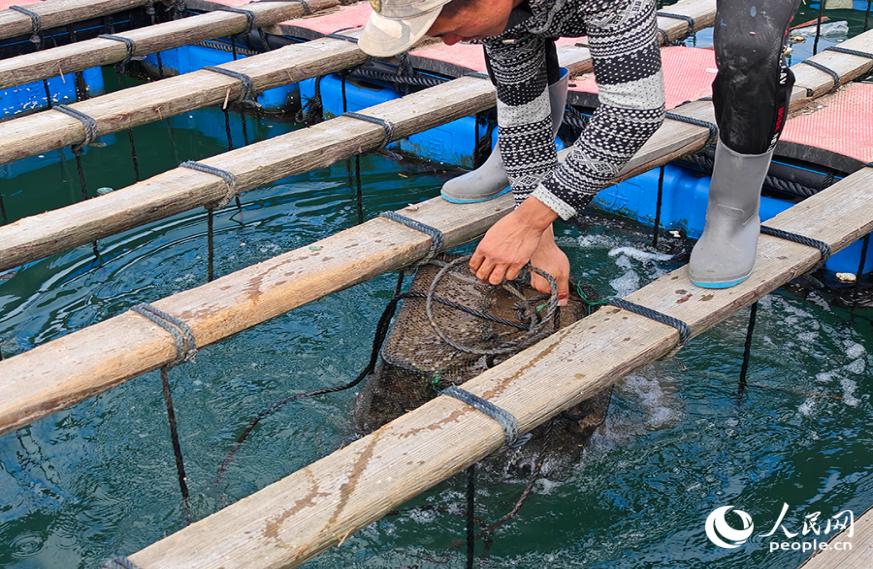
Wang Rongbiao raises an abalone farming cage from the water surface in a mariculture zone located in Tongxin village, Ankai town, Lianjiang county, Fuzhou city, southeast China's Fujian Province. (People's Daily Online/Huang Dongyi)
In Tongxin village, over 70 percent of the villagers are involved in abalone farming. In 2023, the village produced about 2,300 tonnes of abalones, generating a total value exceeding 220 million yuan.
In 2023, the total value of abalone production in Lianjiang county reached 4.75 billion yuan.

Photo shows newly harvested abalones in Lianjiang county, Fuzhou city, southeast China's Fujian Province. (Photo courtesy of the media convergence center of Lianjiang county)
In Dinghai Bay, Xiaocheng township, Lianjiang county, 100,000 large yellow croakers thrive in the "Dinghai Bay No.1" deep-sea aquaculture platform, located about three nautical miles offshore.
They benefit from the unique environment where freshwater from the Minjiang River merges with seawater from the East China Sea.
Since 2018, Fuzhou has been at the forefront of deep-sea aquaculture in China, deploying 11 deep-sea aquaculture platforms in the waters of Lianjiang.
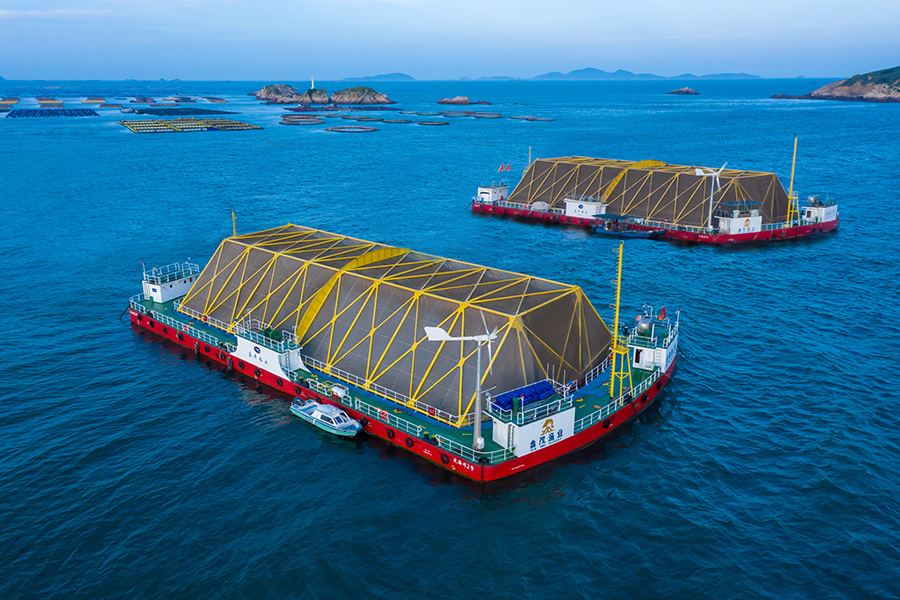
Photo shows the "Dinghai Bay No.1" deep-sea aquaculture platform and the "Dinghai Bay No.2" deep-sea aquaculture platform in Lianjiang county, Fuzhou city, southeast China's Fujian Province. (Photo courtesy of the interviewee)
In 2023, Fuzhou's marine economy reached a total output value of 325 billion yuan, ranking third nationwide.
Photos
Related Stories
- E.China’s Fujian suspends transportation, closes scenic areas as Typhoon Gaemi approaches
- US students go green at exchange camp in Fujian
- Fujian receives 420,000 trips from Taiwan in H1
- Fujian Coast Guard detains Taiwan fishing vessel for illegal fishing
- International youth film program starts in China's Fujian
- "Kuliang stories" continue in China's Fujian
- People from Taiwan Straits celebrate Dragon Boat Festival together on river
- Taiwan compatriots with residence permits now eligible for basic medical insurance in Fujian Province
- Traditional Hanfu fashion week attracts cross-Strait youth
- Passion fruit offers fresh start to once polluted county
Copyright © 2024 People's Daily Online. All Rights Reserved.






